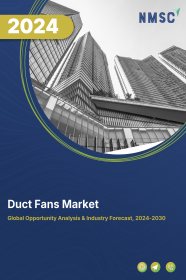
Japan Construction Market by Type (Renovation and New Construction), and by Sector (Real Estate, Infrastructure, and Industrial)–Opportunity Analysis and Industry Forecast, 2024–2030
Industry: Construction & Manufacturing | Publish Date: 29-Oct-2024 | No of Pages: 111 | No. of Tables: 78 | No. of Figures: 43 | Format: PDF | Report Code : CM2217
US Tariff Impact on Japan Construction Market
Trump Tariffs Are Reshaping Global Business
Japan Construction Market Overview
The Japan Construction Market size was valued at USD 448.56 billion in 2023, and is predicted to reach USD 571.43 billion by 2030, at a CAGR of 2.9% from 2024 to 2030.
The construction market, known interchangeably as infrastructure market, plays a crucial role in the economy, overseeing the entire lifecycle of diverse physical structures, encompassing infrastructure, buildings, and facilities. This industry undertakes a broad spectrum of projects, spanning from residential, commercial, and industrial developments to civil engineering and institutional infrastructure ventures.
Collaboration among numerous stakeholders, including architects, engineers, contractors, suppliers, developers, investors, and government agencies, is indispensable for its functioning. Positioned for growth, the industry is being propelled by an increased focus on environmentally sustainable practices, such as the incorporation of green building materials and energy-efficient designs. Additionally, factors such as the rising per capita income in emerging economies and low-interest rates in developed nations are expected to further drive the expansion of the infrastructure market.
Significant Increase in Large-Scale Projects Drives Market Growth
The construction sector in Japan is currently experiencing substantial growth, primarily fueled by a significant surge in large-scale projects. In 2023, notable megaprojects such as the Higashigotanda Two Chome Third District Type One Urban Redevelopment, GLP Yachiyo V, Tenjin Business Center Phase 2 Project, Suzaka Refrigerated Showcase Manufacturing Factory, and Kitanakadori North District B-1 District New Construction is instrumental in propelling the construction industry forward. These initiatives underscore the sector's vital role in Japan's economic development, highlighting its essential contribution to the nation's progress.
Escalating Investments Boost Infrastructure Market Growth
The growth of the construction market in Japan is significantly driven by escalating investments in construction activities. According to data from Global Infrastructure Hub, infrastructure investment in the construction sector surged to USD 145 billion in 2023. Notably, the road transport sector claimed the largest portion of this investment at USD 53 billion, followed by the energy sector at USD 36 billion. This ongoing investment trend is expected to continue, further catalyzing the growth and advancement of the infrastructure market in Japan.
Regulatory Complexities in the Infrastructure Market Barriers the Market Growth
Navigating through regulatory complexities presents a formidable challenge in the construction market. Infrastructure projects often face hurdles due to the intricate network of government regulations and permitting procedures. Infrastructure initiatives require obtaining numerous permits and approvals from governmental bodies at local, regional, and national levels.
These mandates entail adherence to zoning regulations, environmental assessments, compliance with building codes, safety standards, and various regulatory requirements. Lengthy permit acquisition processes, bureaucratic inefficiencies, and regulatory disparities among different jurisdictions can significantly extend project timelines and inflate costs. Moreover, fluctuations in regulations or unexpected policy changes can disrupt ongoing projects and deter potential investments.
Integration of Digitalization and BIM Presents Lucrative Opportunity for Market Expansion
The construction market is undergoing a significant transformation through the integration of digitalization and the adoption of Building Information Modeling (BIM). Advanced technologies such as BIM are enhancing efficiency, accuracy, and collaboration across diverse projects. BIM, a sophisticated 3D modeling tool, empowers stakeholders to generate and manage digital representations of structures and infrastructure, facilitating improved coordination and communication among project teams.
For instance, in September 2022, the National Institute of Building Sciences (NIBS) launched the Japan National Building Information Management (BIM) Program. This initiative aims to revolutionize the infrastructure sector, achieving unprecedented levels of industrial efficiency through digitalization. By addressing the inadequacy of digitalization within the Japan infrastructure sector, the program seeks to streamline lifecycle work processes, enhancing efficiency, cost-effectiveness, resilience, and safety for infrastructure and maintenance projects.
Competitive Landscape
The market players operating in the Japan infrastructure industry include Obayashi Corporation, Kajima Corporation, Shimizu Corporation, Taisei Corporation, Takenaka Corporation, Haseko Corporation, Infroneer Holdings, Toda Corporation, Penta-Ocean Construction, Sumitomo Mitsui Construction, and others.
Japan Construction Market Key Segments
By Type
-
Renovation
-
New Construction
By Sector
-
Real Estate
-
Residential
-
Affordable
-
Luxury
-
-
Commercial
-
Retail Buildings
-
Office Buildings
-
Hospitality
-
Healthcare Facilities
-
Educational Institutes
-
Entertainment Ventures
-
-
-
Infrastructure
-
Transportation
-
Airport
-
Port
-
Rail
-
Road
-
-
Water and Wastewater
-
Energy
-
Telecommunication
-
-
Industrial
-
Manufacturing Plant
-
Warehouses
-
Power Plants
-
Oil Refineries
-
Chemical Plants
-
Key Players
-
Obayashi Corporation
-
Kajima Corporation
-
Shimizu Corporation
-
Taisei Corporation
-
Takenaka Corporation
-
Haseko Corporation
-
Infroneer Holdings
-
Toda Corporation
-
Penta-Ocean Construction
-
Sumitomo Mitsui Construction
REPORT SCOPE AND SEGMENTATION:
|
Parameters |
Details |
|
Market Size in 2023 |
USD 448.56 Billion |
|
Revenue Forecast in 2030 |
USD 571.43 Billion |
|
Growth Rate |
CAGR of 2.9% from 2024 to 2030 |
|
Analysis Period |
2023–2030 |
|
Base Year Considered |
2023 |
|
Forecast Period |
2024–2030 |
|
Market Size Estimation |
Billion (USD) |
|
Growth Factors |
|
|
Companies Profiled |
10 |
|
Market Share |
Available for 10 companies |
|
Customization Scope |
Free customization (equivalent up to 80 working hours of analysts) after purchase. Addition or alteration to country, regional, and segment scope. |

















 Speak to Our Analyst
Speak to Our Analyst

















